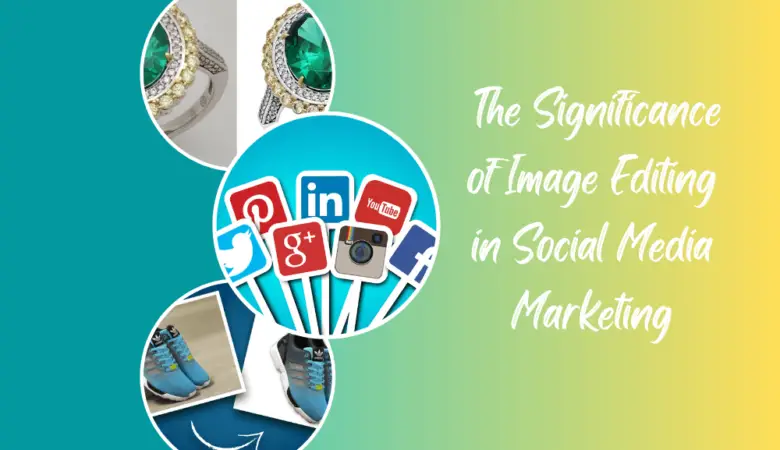Photography is one of the industries that the coronavirus pandemic has hugely impacted. Everything from wedding photography to travel photography has taken a hit. So, if you are launching a new photography business right in the middle of the pandemic, you have got to make sure that your focus is correct.
You have to prioritize your efforts, time, and budget in directions that will help your business achieve success. Today’s post is dedicated to sharing business trends that will give your efforts and investment a focused approach. So, let’s look at what they are.
Table of Contents
Trend #1: Authentic Images
Businesses that are perceived as authentic and offering something of real, human value to the audience have their day in the sun.
As a photography brand, this means less reliance on editing software and more hard work and effort to produce beautiful, natural photographs.
- What Does It Mean?
A few years ago, Priyanka Chopra, Maxim, and Photoshop were the subject of a hot internet debate. The publication had decided that Priyanka Chopra’s armpits needed a bit of Photoshop magic and went ahead to smooth them out. In the process, the pits almost vanished. Twitter freaked out, and people were grossed by society’s obsession with ‘perfect female beauty standards.
It’s 2021 now, and the insistence on authentic representation is higher than ever before. People call out images that look ‘overly edited’ and consider them fake. Research links these digitally-altered images to mental health issues such as body dysmorphic disorder, various eating disorders, and depression and anxiety.
People are hungry for authentic content. Pregnant women want to show off their stretch marks. Teens want to show off their acne. Men are getting comfortable with their potbellies, and aging women take pride in their grey hair and fine lines. And marketers continually list authenticity as the number 1 factor that inspires brand loyalty.
- What to Do With It?
Hone your photography skills. Spend time learning. Play around with light and work with angles. In other words, get the shot right and spend less time on the editing software. Also, when the occasion calls for it, own up to the editing and explain your process.
Trend #2: Micro-Influencers
This trend is related to the marketing and promotion of your photography brand. Businesses and professional services are looking to collaborate with micro/nano influencers, ditching their most popular counterparts.
These influencers (with usually a small following of 1000-5000 followers only) enjoy a stronger bond with their audience and have a more upstanding reputation. More famous influencers – though their reach is wide – are now perceived as paid brand ambassadors more than anything else.
- What Does It Mean?
You have just started your photography brand. Usually, as a professional artist, you are an influence in your own right. But there’s no denying the impact a strong influencer can bring to a brand. Still, the overly saturated influencer market is nearing its bursting point.
Audiences and companies are starting to wonder if it’s as transparent as it looks. This changing perception will affect not only the most famous influencers but the brands they support, too.
That’s why savvy marketers and brand owners are now looking towards more niche influencers that are naturally relevant to their products/services/vision.
- What to Do with It?
Forget likes and followers—partner with influencers that are naturally aligned to your business. For example, if you do wildlife photography, an influencer who works with wild animals in some capacity is your jackpot find.
For wedding photographers, influencers who are makeup artists or who do bridal dresses, for example, are a great fit.
Trend #3: A Professional Brand
The competitive photography market has enabled a wider customer base to hire professional photographers’ services instead of relying on amateurs.
Brands that appear professional, knowledgeable, and organized stand out in the currently crowded market.
- What Does It Mean?
As a photographer, you know the power of great visuals and appearances. If you appear unorganized, clunky, or inconsistent, you won’t find many clients who’d trust you to do a good job. You won’t be able to charge good prices, and you most certainly won’t get premium clients.
As a photographer, your personal brand is your business brand, too. Clean clothes, a groomed personality, organized equipment, punctuality, and a pleasant attitude all adds to how your brand appears to the public. But you need more than that to tap into this trend.
You need a unique visual identity to represent your brand. This is what your logo, website, and brand guide would do. It will enhance your appeal as a professional and as a business owner. People’s perception of you will improve from a photography amateur to a serious professional.
- What to Do With It?
Hire a professional graphic design artist or use an automated Logo Design tool to create your unique photography logo.
Use Shopify to design your photography website, and pick out a great color palette to represent your brand.
Also, work on creating a unique tone and voice for your brand through your ad copy, social media caption, blog posts, and graphic design elements.
Trend #4: Move to Mobile
A major trend that is going to dominate the whole photography industry in 2021 and beyond is the move from professional cameras to mobile-phone cameras. No, the phone cameras won’t be replacing our beloved DSLRs anytime soon, but the improvements in the former have been astounding. And the strides continue.
- What Does It Mean?
Most Smartphone cameras now come packed with the power of AI. The sensors are becoming sharper, the lenses more focused. Sure, the amount of detailing in the image, the overall sharpness of the photograph, and the uncompromising quality of the results of a DSLR camera cannot be reproduced on the phone camera. Yet, what these tiny hand-held devices can achieve is quite cool, and the gap in image quality is closing very fast.
In addition to the improvements in image quality, some other factors that are driving the move towards phone cameras include convenience, ease-of-use, and immediate storage on the cloud – Apple and Android, both.
- What to Do With It?
As a new business owner of a photography setup, invest in a good quality camera phone for a bit of street photography to capture those shots that you could never predict (the ones that get you viral), and some regular image is grabbing to keep your Instagram feed rolling.
Trend #5: Studio Management Software
To run a successful photography business, you not only need mad talent and skills but a knack for business operations too.
From administration to finances and legal affairs to marketing, you need to handle all of it. Studio management programs automate all these tasks (and others) for you, allowing you to focus more on photography and perfecting your talent.
- What Does It Mean?
As you get ready to launch your photography business, you’ll realize how many different hats you have to wear to keep the business growing. You need an accountant, an office admin, an assistant, and a marketer. You also need a lawyer to draw up your contracts with your clients.
You can choose to do it all by yourself or hire a core team if your budget allows. But subscribing to a studio management CRM is far less expensive than hiring multiple employees and far less convenient than learning to do all these tasks on your own.
Using a CRM system (Customer Relationship Management) or a service company software helps you with managing workflow, generating leads, scheduling, invoicing and payments, and many other tasks. Many high-end CRMs also offer client portals that your customers can access to view your work and get in touch with you. These portals are customer-facing pages containing your portfolio, contact information, and other important details about the business.
Some popular CRMs among the photography community include ShootQ, Studio Ninja, Tave, and others.
- What to Do With It?
Well, go ahead and subscribe to one of them already! Unless, of course, you have a lot of cash lying around for employee management or loads of free time in case of a sparse supply of clients.
A Word Before You Go
Using trends to understand how the industry will behave in the coming months and years can help you plan your future strategy.
However, to make sure that your business is adaptable to sudden interruptions, keep room for wiggles and pivots. Businesses that can adapt quickly to what the situation demands are the only ones that survive.
So, use these trends to inform your policy but keep your ear to the ground so you can evolve when needed.




